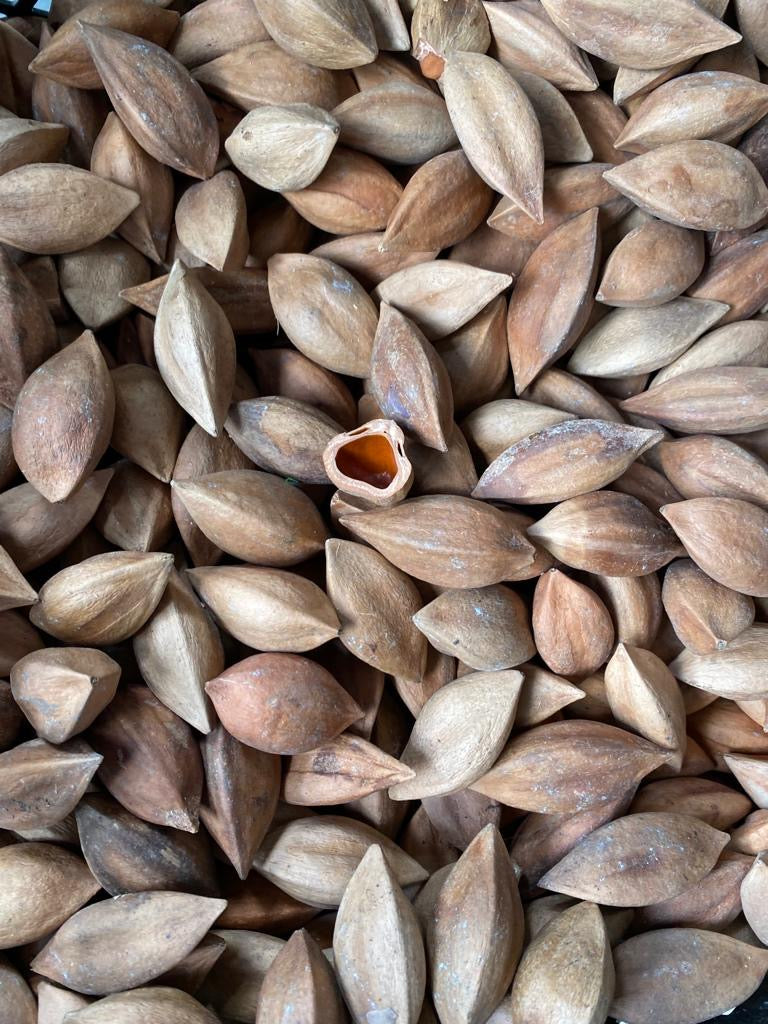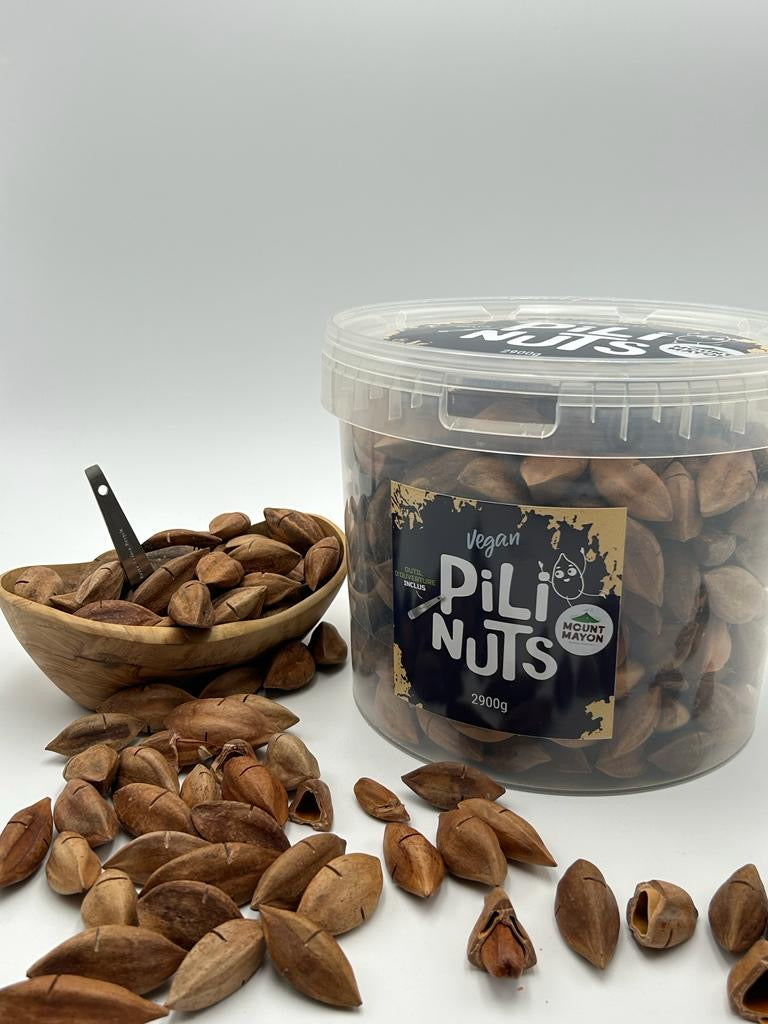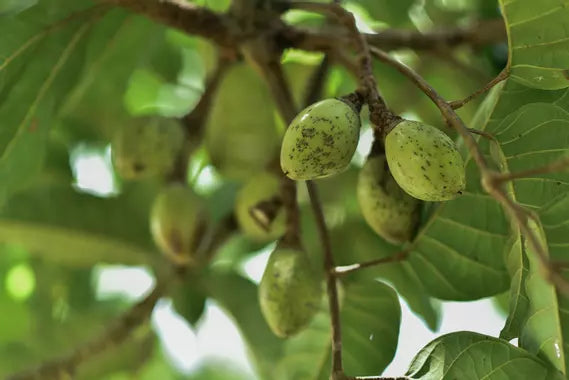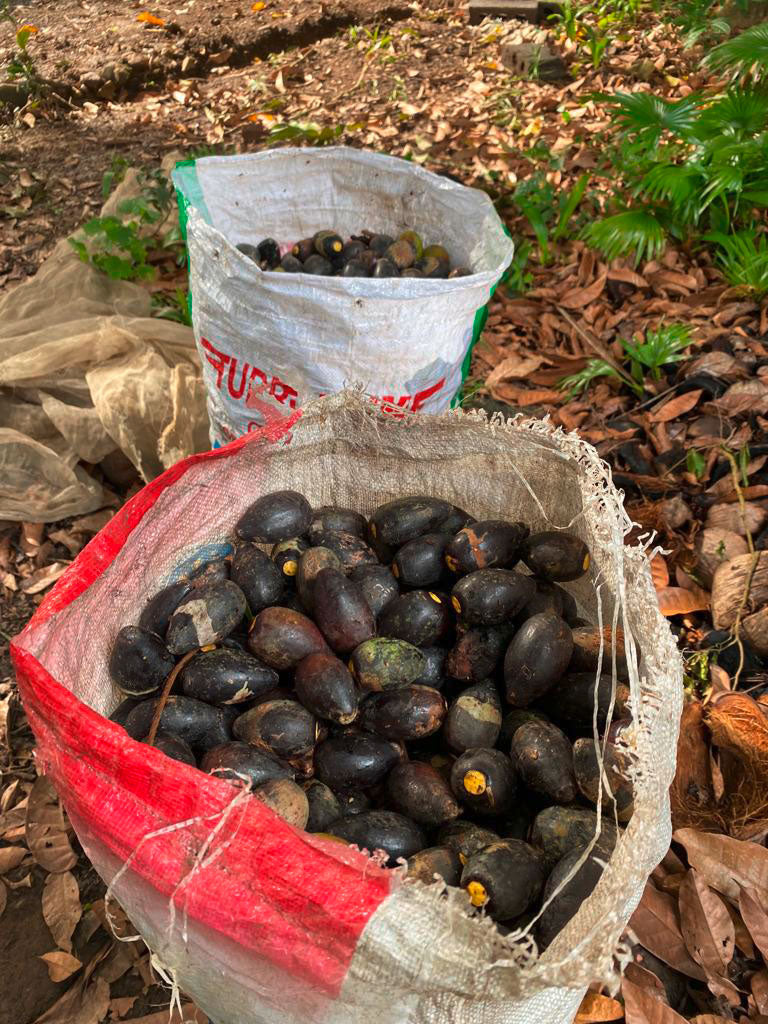
WHAT IS A PILI NUT?
HIS HISTORY
How to consume it?-

Discover the pili nut!
The pili nut grows naturally in the volcanic regions of Bicol in the Philippines. The Pili (Canarium ovatum), also known as the hope tree , is an evergreen tree that can grow up to 20 meters tall and produces egg-shaped fruits that contain an edible nut. Pili nut is rich in nutrients and healthy fats, making it a healthy and nutritious snack.
-

Its benefits!
Apart from its taste qualities, pili nut is also rich in nutrients such as protein, healthy fats, fiber, magnesium, phosphorus and B vitamins. It is also rich in antioxidants, which help fight radicals free and therefore protect the cells against them.
-

Her popularity
For years, these trees were little known outside the country, but today they are timidly showing their noses in European and North American states. They are gaining popularity particularly because of the nutritional values of its fruit (the pili nut), as well as its extremely beneficial effect on health.
FROM THE TREE TO ITS COMMERCIALIZATION
AT MOUNTMAYON TRADING COMPANY

MATURING PILI NUTS
Pili nuts grow on trees that can reach a height of 35 meters. The nuts ripen 5 to 7 months after flowering. Once mature, the outer shells begin to split, revealing the nut inside.

GATHERING
The pili nuts are picked manually. Pickers can climb trees to reach ripe nuts. Sometimes sticks or special tools are used to lightly shake the branches and knock the nuts off. Some farmers prefer to wait until the nuts fall naturally to the ground before collecting them.

SORTING
Once the pili nuts are collected, they are sorted to remove damaged or unripe fruits and washed. These steps ensure better quality.

SHELLING
After sorting, the pili nuts are shelled to extract the edible seed inside. This can be done by hand or using special tools.

DRYING
Once sorted , shelled and washed , they are dried in the sun for a few days. Drying helps reduce the moisture content of nuts, which helps extend their shelf life. The pili nuts are then ready to be consumed as is or used in various culinary preparations.





